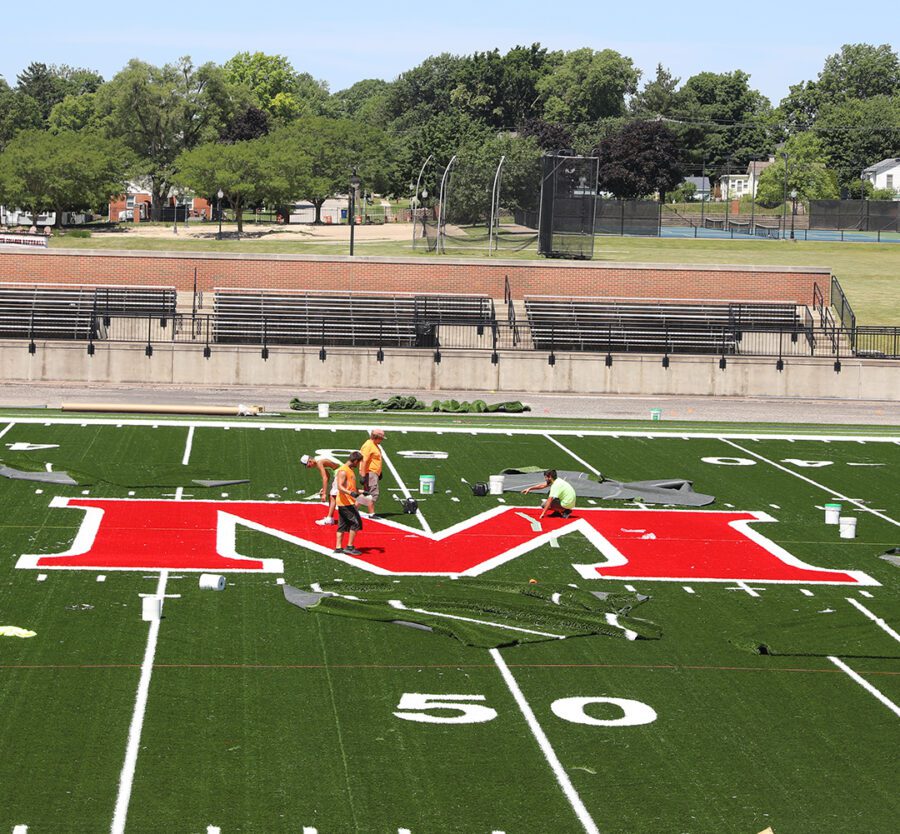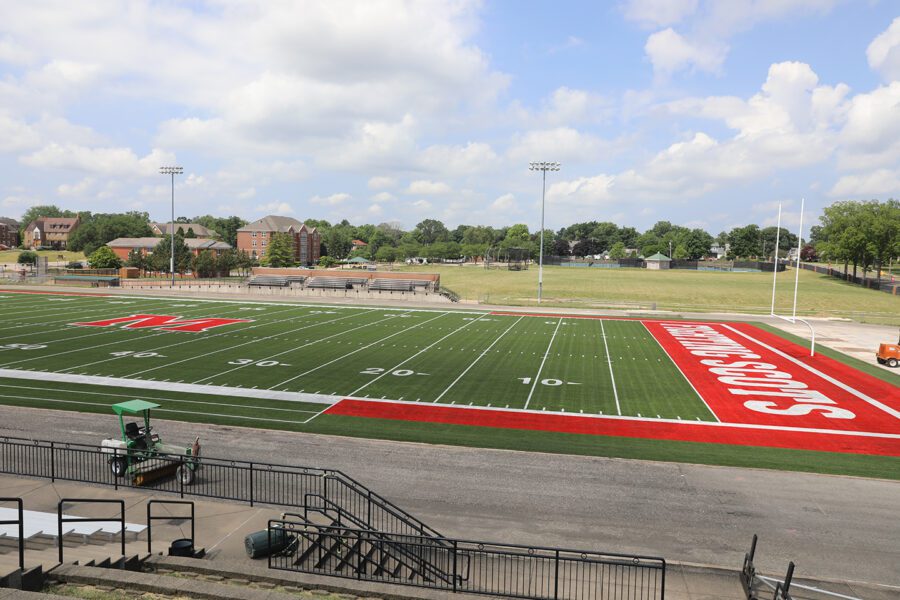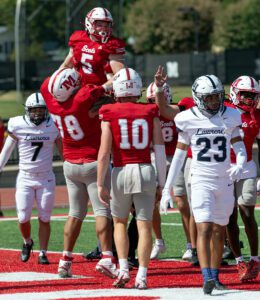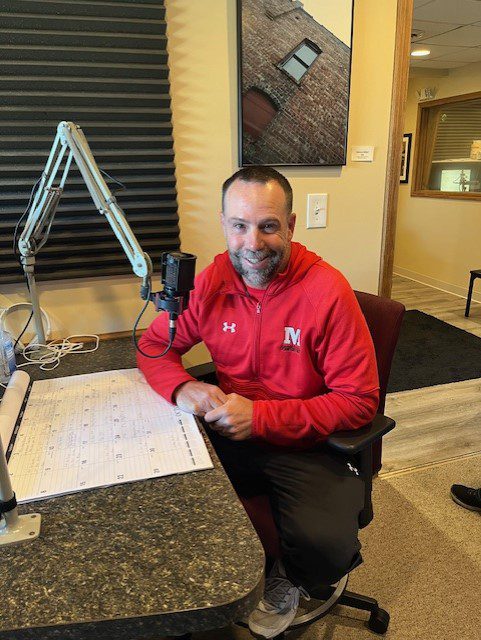Story by Barry McNamara
MONMOUTH, ILL. (06/24/2024) During his days as a Monmouth College student in the early 1980s, Roger Haynes was once tasked by the athletic department with an important nightshift – guarding the Fighting Scots’ track from dusk to dawn during a key time in the installation of its then-new surface.
As the College made a surface shift, modernizing from a cinder track, Haynes and 1982 classmate Mike Simkins were stationed to ward off any potential shenanigans.
Today, Haynes is director of athletics at his alma mater, and his assignment at that facility is a bit more complex than simply sitting in a lawn chair in the wee hours of the day. For the past few months, he’s worked with vendors and construction companies to oversee a $1.6 million makeover at what is now known as April Zorn Memorial Stadium, home to the Scots’ football and outdoor track and field teams.
Started in mid-May, the project – funded by the State of Illinois Independent Colleges Capital Investment Grant Program – will be completed prior to the return of students for the fall semester.
A commitment to student-athletes
“This shows our commitment to our student-athletes at Monmouth,” said Haynes. “About 180 student-athletes will use this facility in the coming year – about 110 on the football team and about 70 in track. The College has made other commitments in recent months, such as adding nursing and creating a new theatre space. It’s important to also show that kind of support for our student-athletes. It will be a high-performance facility, and our athletes should be excited to play at the facility. We think both are going to look great for recruits and for parents and for fans of the sports.”
Part of the project is new synthetic turf for the stadium’s Bobby Woll Memorial Field, replacing what was installed in 2009 when the College shifted from a natural grass surface. The other is the complete renovation of the track, parts of which have not been altered in the four decades since Haynes and Simkins played the role of would-be bouncers.
“The typical age span of the subsurface is 15-20 years,” said Haynes, who spent thousands of days at the stadium during his 38 years as head coach of the Fighting Scots track and field team. “The top has been resurfaced since (the early 1980s), but not underneath.”
By the time all of its layers are in, the new material in the track will be about 12 inches deep. Haynes was asked if that means Scots’ sprinters will run faster next spring.
“Yes,” was his quick reply. “It should be super flat, and it should be plenty firm. Our athletes will get a lot of ‘return’ from the Beynon surface. It should be as nice a track as any of our competitors have.”
At one of the meccas of the sport, the University of Oregon’s world-class Hayward Field, the track has a Beynon 1000 surface. Monmouth will have the company’s next-best surface, Beynon 300.
“They tore down the track and milled it down,” said head track coach Brian Woodard. “They’re going to go a bit deeper to ensure that we have a good surface for a long time. It’s going to be a restructure with the asphalt, and then it’s going to be a new surface with a nice red color on top again.”
Woodard believes the Zorn Stadium changes will have the same effect on the College that the completion of the Huff Athletic Center did two decades ago.
“The momentum is there for us to really take that next step forward again,” he said. “We had a charge there when the indoor track facility was done and there was a vitalization on campus. I think that’s the direction we’re going again. We feel great about our shoes getting a little dirty on campus again.”
Red zones aplenty
Big-time facilities were definitely part of the planning process when it came to the design of the new Sprinturf field – UltraBlade DFE Extreme, if you’re scoring at home. Football head coach Chad Braun used aerial shots from such schools as the University of Alabama and the University of Utah to come up with a look heavy on the color red. The end zones – one of which says “Monmouth” and the other “Fighting Scots” – are Monmouth red, and so is the area of the sidelines known as the “red zone,” no matter what a team’s colors are.
One place where the turf won’t say “Fighting Scots” is at midfield. Haynes explained that the previous logo there, with its intricate red, white and black coloring, eventually led to an uneven surface.
“Every time the color (of the turf) changes, there’s glue,” said Haynes. “So the old logo had too many layers glued together. From a physical standpoint, the new turf and design is going to be a lot better – better footing, less carpet burns, that kind of thing.”
In its place is a block varsity “M,” adding yet another splash of bright red to the new $400,000 dual-fiber surface.
“I think it looks good,” said Haynes.
“I remember in 2009 when the turf went in the first time, it was real exciting, and it’s just as exciting now,” said Braun. “It’s a new look with the red end zones and the ‘M’ logo in the middle. The track’s really going to make it pop when that gets done. … Our players are really excited about it. We’re excited to get on it and start using it.”
Back in his undergraduate days, Haynes guarded a stadium that was pitch-black at night. That’s something else that’s changed under his direction, as Monmouth hosted its first night football game two years ago. The Scots will usher in their new playing surface with the program’s second-ever such game at 7 p.m. Sept. 7, playing Wartburg in the season opener for both teams.

***Story and photo courtesy of Monmouth College***
















